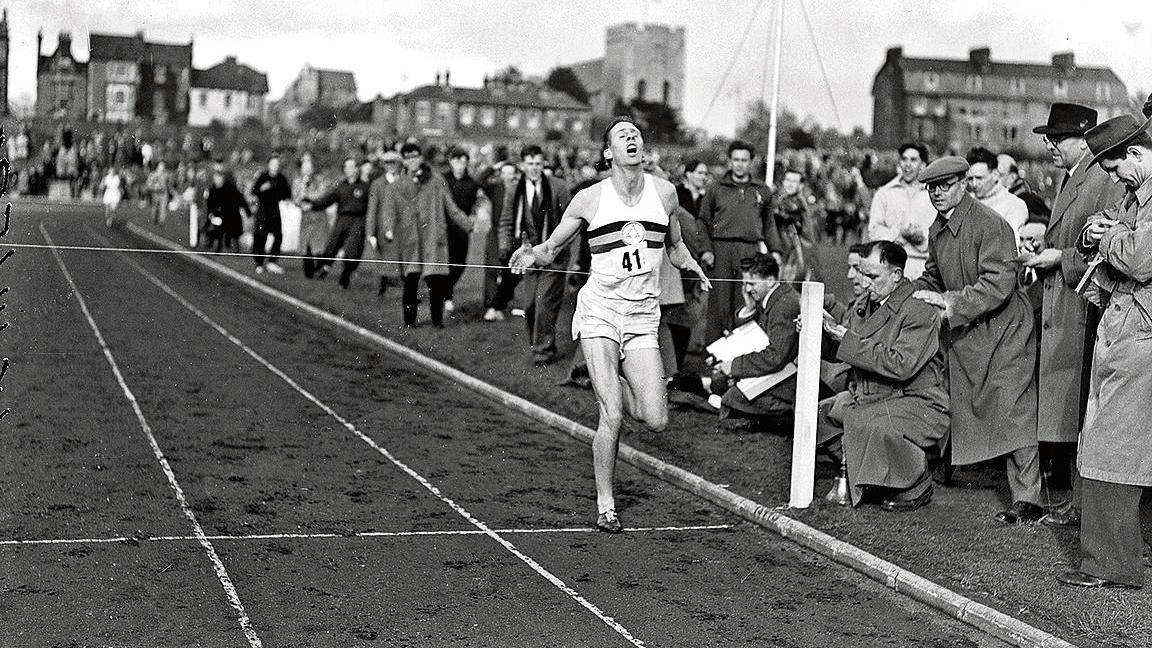This is an excerpt from my book, The Pursuit Of Excellence
From the beginning of recorded history through May 6, 1954, the fastest any human being had ever run a mile was 4:01.4. When it comes to pursuing excellence: the standard of “good enough” becomes a barrier that resists being broken. To chase excellence means to confront that resistance and push beyond it. So it was with the four-minute mile. Runners from across the globe had been focused on breaking that barrier for nearly 70 years, all to no avail. And then came Roger Bannister. The most remarkable aspect of Bannister’s barrier-breaking run of 3:59.4 was how unexpected it was for that runner on that day to be the one.
It Doesn’t Have To Be Perfect
As Bill Taylor, co-founder of Fast Company, writes, the “experts” had long believed breaking the four-minute barrier would require ideal running conditions: “It would have to be in perfect weather—68 degrees and no wind. On a particular kind of track—hard, dry clay—and in front of a huge, boisterous crowd urging the runner on to his best-ever performance.” But on May 6, 1954, Roger Bannister had none of those things working in his favor.
The day was cold, the Iffley Road Track in Oxford was wet, and the crowd was small at “just a few thousand people.” On top of that, Bannister himself was hardly the picture of a singularly focused athlete intent on breaking this imposing barrier. The bulk of his time was devoted to being a medical student. He was “an outlier and iconoclast—a full-time student who had little use for coaches.” He didn’t train like a maniac and sprint miles every day. He was notorious for doing the opposite: training for just one hour per day. Bannister did not go on to become the greatest middle-distance runner in the world. Instead, he finished his studies and became a neurologist. How did this happen, and why does it matter? First: Rather than employ an all-out training push that would have required him to sacrifice his studies, Bannister applied a scientific approach to training. He treated each race like an experiment. “Improvement in running depends on continuous self-discipline by the athlete himself, on acute observation of his reaction to races and training, and above all on judgment, which he must learn for himself,” he wrote. He believed the impossible was possible. Bannister was known to close his eyes and visualize the race, step by step. He would create the image, see the finish line, and hear the crowd—all in his mind.
Belief
What separated Roger Bannister was that he believed he could do it. Runners had been attempting to break the four-minute mile since 1886. John Bryant, a British runner and journalist, wrote, “For years milers had been striving against the clock, but the elusive four minutes had always beaten them. It had become as much a psychological barrier as a physical one. And like an unconquerable mountain the closer it approached, the more daunting it seemed.”3 Bannister focused just as much time on conditioning his mind as on conditioning his body. “The mental approach is all-important because the strength and power of the mind are without limit,” he wrote. “All this energy can be harnessed by the correct attitude of mind.”4 The proof that the impediment to a sub-four-minute mile was psychological rather than physical lies not with what Bannister accomplished that soggy May morning in Oxford but with what happened after. Just 46 days after Bannister’s historic feat, John Landy, an Australian runner, not only followed Bannister past the four-minute barrier, he bested it by over a full second: 3:57.9.5 Before a calendar year had passed after Landy’s record, three more runners broke the four-minute mark in the same race.
What Changed? The Mental Model
The current world record time for the mile sits at 3:43.13, set in 1999. In their book, The Power of Impossible Thinking, Wharton School professors Yoram Wind and Colin Crook devote an entire chapter to Roger Bannister’s feat in which they pose the following questions: “Was there a sudden growth spurt in human evolution? Was there a genetic engineering experiment that created a new race of super runners? No.” The answer to what Bannister had achieved was not physical. “What changed was the mental model. The runners of the past had been held back by a mindset that said they could not surpass the four-minute mile. When the limit was broken, the others saw that they could do something they had previously thought impossible.”7 There are four-minute-mile barriers in all our lives. Where are they in yours? What seems impossible but isn’t? While you are misusing your energy believing it can’t be done, the Roger Bannisters of the world are busy getting it done. Who would you rather be? All your energy can be harnessed by the correct attitude of the mind.


Same goes with the 900. Once Tony Hawk did it, others could do it.
[…] by /u/Olshansk to r/todayilearned [link] […]
Visualize a point beyond the target, the worm hole in the apple.
[…] View Reddit by Olshansk – View Source […]
Beautiful and thought provoking. Thank you